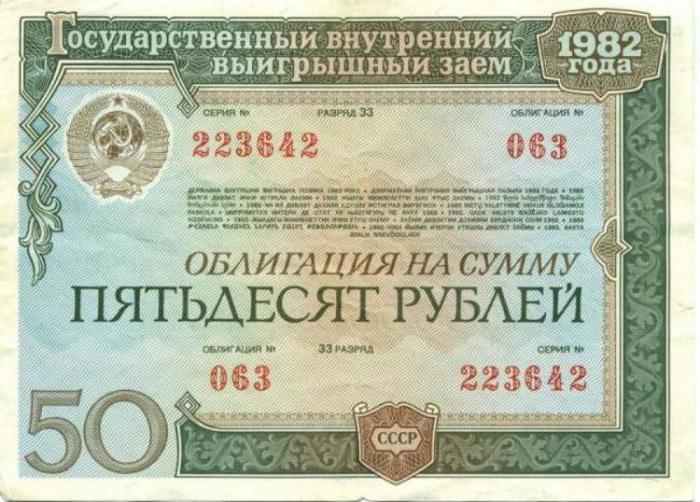In order to uninterruptedly finance needs in the context of a budget deficit, the state must attract resources from business entities. In such cases, a loan is used. But in this transaction, the borrower is not an individual, but the state.
Essence
A state loan is a way of raising funds to a budget for a fixed term. Creditors in such transactions are legal entities and individuals, investors from other countries. It is difficult to find a state in the world that would not need additional funds. If domestic revenues from taxes and other incomes are insufficient, funds from external sources are attracted to cover the deficit on a return basis.

This method of financing is as popular as issuing. At the end of the loan period, the borrower must repay the loan, taking into account interest. The sum of all unliquidated obligations forms the debt of the country as a whole.
Characteristic
A state loan can be attracted for various purposes and terms. It also has characteristics such as urgency, payment and return basis. Also, do not confuse an external government loan with an internal one. In the first case, credit organizations are financial organizations, enterprises and citizens of the state itself, and in the second - from other countries.
This type of lending has its own characteristics:
- he is usually employed to cover the deficit;
- the security for the transaction is all state property;
- the target nature is not as clear as in a regular commercial loan;
- the source of loan repayment is taxes, and not income from the results of economic activities;
- the consequence of the transaction is a reduction in the circulation of money supply.

Functions
- Distribution - allocation of funds for centralized funds on the principle of priority (money is allocated in those areas where they are most needed).
- Regulatory - with the help of such loans it is possible to influence monetary circulation, refinancing rate levels, etc.
- Control - funds should be used for the purposes for which they were involved.
State VS bank loan
These two types of loans are different. When applying for a bank loan, collateral is specific values: stocks, goods, equipment. In the second case, state property is the pledge. Therefore, in the event of default, an arrest may be imposed on all property located abroad. Sanctions may include trade representative buildings, accounts of state-owned companies opened in banks. Only property of consulates shall be excluded. If the funds provided are used efficiently, this positively affects the level of employment and production in the country. In many countries, state guarantees of loans obtained from exporters are used to expand the market for products.

Types of Government Loans
At the place of issue:
- external (in foreign currency) loans - provide international funds, other countries and their entities;
- domestic loans - are provided in national currency;
- municipal loans - can be issued in any currency.
By term:
- short-term (up to 12 months);
- medium-term (1-5 years);
- long-term (20-30 years).
By security:
- mortgages on which a pledge in the form of a certain property is provided;
- in non-contractual transactions, the collateral object is not clearly described in the contract.
By holding entities:
- loans only for the population;
- loans for legal entities;
- loans for organizations and the public.
By placement methods:
- voluntary;
- by subscription;
- forced.
Depending on the form of the provision of funds, state loans are divided into bond, interest, guarantee, intergovernmental and “sheared.”
Bond loans
Most popular coating method budget deficit funds - this is the issue of the Central Bank. This method is also used to solve the problem of cash gaps, attract additional sources of financing for large-scale projects and repay other obligations.
Government securities loans are provided in the form of:
- bonds: in 1995, with their help, the state budget deficit was financed;
- current liabilities Ministry of Finance, aimed at financing state expenses and covering the budget deficit of funds;
- couponless bonds of the Central Bank;
- debt obligations of a domestic foreign currency loan;
- Eurobonds.
Bondholders may resell debt obligations. nominal cost The Central Bank corresponds to the loan amount, and the market price indicates the possible selling price.
Bills
Government loans may be issued in treasury bills. Bills are used to cover the municipal budget deficit. Most often they are issued for a period of 1 to 5 years.
Government loans of the Russian Federation are classified by issue. Depending on who issues the securities, all funds raised may go to the state or local budget. In this case, the terms of the issue may provide for early redemption.
Appeal
In countries with developed industry, the share of the Central Bank, which after release falls on the market, is approximately 70% of the state debt. Such bonds are worthy of competition with bank deposits and are used to attract free cash. An investor who acquired non-marketable securities can sell them only to the state. Such bonds do not circulate in the stock market and are issued solely with the aim of attracting small lenders.
Payouts
Repayment of state loans can be carried out in the form of interest, discount. The terms of the contract may provide for a mixed nature of payments. Income paid at the interest rate varies depending on the market situation and existing loan offers. A fixed rate restrains investors who want to get more income, and increases interest costs. The essence of the discount court is that holders of the Central Bank first purchase bonds at a discount, and then the state redeems them at full cost.
Federal loan agreement
This document draws up the fact of the provision of funds to the state. The agreement provides for voluntary cooperation between the borrower and the lender. If a legal entity or an individual wants to become an investor, he needs to purchase government securities issued in circulation. Bonds give holders the right to recover the amount of debt, taking into account interest. So the state loan of the USSR was provided. None of the parties to the transaction can change the conditions of the Central Bank that are in circulation.

Mandatory conditions of the loan agreement are:
- repayment of debt within the agreed period;
- transaction security;
- size of the rate for which a state loan is granted.
Loans received internally form an internal debt, and from international organizations - external. These two indicators play an important role.
Macroeconomics
The state domestic loan, which is received from the Central banks, is fixed in liabilities in the form of growth of money supply due to the purchased bonds. This monetizes domestic debt. That is, the issued loan is the security of the issued money.
Interest on which a state domestic loan is provided is also a macroeconomic regulator.If very large volumes of resources are attracted at a high percentage, then the total discount rate will increase. This will immediately negatively affect entrepreneurship.
Government loan should be used effectively. For example, go to the construction of the railway, the purchase of production facilities. Otherwise, the burden of paying the debt falls on taxpayers for several decades to come. That is, we can say that an increase in public debt is a moral problem.
Public debt management
The state and the Central Bank use a whole range of measures aimed at paying off obligations. In particular:
- repay government loans;
- public debt is secured by collateral;
- make payments to lenders;
- issue new loans, etc.
These management methods are used to:
- reduction of loan servicing expenses;
- ensuring financing of socially significant programs;
- maintaining a stable political system.
State Winning Loan
Today, almost every loan is targeted. Moreover, banks develop programs for specific goals and customers. Therefore, there is a division into consumer, car loans and mortgages.
Government loan is also targeted. Given the problems in most sectors of the economy, how can you borrow money without specifying a specific direction for their use? In practice, such loans are not available. Therefore, loans are considered targeted. Directions for the use of funds are clearly specified in the contract. If the document lists the funded areas for the development of education, and in fact the funds were spent on the purchase of production plants, the lender may demand an early repayment of the entire amount of the debt.
Government loans in the USSR
In Soviet times, funds raised by the government were used to finance basic production costs. There was a redistribution of capital. Temporarily available funds of individuals and legal entities were transformed into those that are suitable for long-term financing. Enterprises invested in payment obligations of the Central Cashier of the NKF of the USSR. The security was issued for 6 months. But with this tool, the state gained access to a long-term loan of several million rubles.
The second advantage of the state loan was that it stimulated the accumulation of capital. The growth rate of the national economy at a given level of national income depends on the amount of funds allocated for consumption and accumulation. Government loans stimulate capital saving.
Periods of war, social upheaval and revolution destroy the very idea of accumulating funds. The process of economic recovery requires investment. We have to bring up our savings skills again. This problem can be solved with the help of state loans. Excess banknotes are withdrawn from the market, demand for goods is reduced, prices are reduced.
The table below shows the state debt of the USSR.
| Loan Name | Release | Nominal amount of the loan, million rubles |
| State 8% domestic loan | 1924 | 100 |
| First Peasant Winning Loan | 50 | |
| Second Peasant Winning Loan | 100 | |
| State short-term 5% domestic loan | 1925 | 10 |
| Re-issue of a peasant loan | 100 | |
| Reissue of a state loan | 300 | |
| Second Peasant Winning Loan | 100 | |
| Second state 8% domestic loan | 1926 | 100 |
| Winning loan | 30 |
Conditionally, 1924-1926 can be divided into two periods. The first two years are characterized by a large number of short-term loans with a forced nature of implementation. During this period, the government tried to cover the default without issuing money. Therefore, in the years 1924-1925, several very large loans were issued. Their goal was to accelerate the flow of funds to the treasury. The first compulsory loans were designed for cash savings of the population.These loans did not actually increase the amount of cash resources, but only moved the timing of their receipt over time.
The second stage of lending
From February 1925 the recovery period began. Loans issued were placed on a voluntary basis and according to market requirements. Revenues from transactions were directed to economic construction.
The attempt to place the first voluntary winning loan was a failure. The prerequisites for the development of long-term credit operations were not created in the country. This was hindered by a high discount rate, limited available funds, and distrust of a new financing instrument with a low level of profitability. Therefore, the next loan was forcibly placed among workers and payers of income tax. The second loan has already been distributed among non-working strata of the population. Subsequent loans were only called voluntary. At certain stages of implementation, coercion still occurred. Such measures had a number of negative consequences.
The population sought to quickly get rid of the Central Bank, throwing them on the market. The tax paid without fail during the sale of the bond completely excluded its value. Due to excess supply, the market price dropped to 20% of the face value. Despite the high yield of the bond (130%), there were no people wishing to acquire it.
As a result of the sharp decline in the rate of government bonds, they were first quoted on the stock exchange at real cost, and then completely moved to the black exchange and turned into illiquid central banks. Only after abandoning the compulsory methods of placing a loan did the process of market recovery begin.
Conclusion
Government securities loans may be required by both economically weak states and advanced economies. Regardless of the root cause, before making a decision, you need to thoroughly study the issue and justify obtaining a loan.








